Are you tired of overcooking or undercooking your steaks? Do you find it challenging to achieve the perfect level of doneness? Look no further! In this article, we will unveil the ultimate steak cooking chart that will ensure your steaks are cooked to perfection every time. Whether you prefer a rare, medium, or well-done steak, this chart will be your guide to culinary success.
Table of Contents
Steak Cooking Charts
Before we dive into the details of the steak cooking chart, it is essential to familiarize ourselves with the different types of steaks. Steaks come in various cuts, each with its unique characteristics and flavor profiles. Understanding these differences will help you make an informed decision when selecting the right steak for your meal.
The Importance of Cooking Steak Properly

The Characteristics of Various Steak Cuts
First, let’s explore the characteristics of different steak cuts. Ribeye steaks are known for their rich marbling and flavorful taste. The marbling, which refers to the streaks of fat throughout the meat, adds juiciness and enhances the overall flavor. When cooked to perfection, a ribeye steak offers a melt-in-your-mouth experience that is hard to resist.
Tenderloin steaks, on the other hand, are exceptionally tender and lean. This cut comes from the muscle that runs along the spine, and it is known for its tenderness. Tenderloin steaks are often considered the most luxurious and sought-after cuts due to their buttery texture and mild flavor.
T-bone and porterhouse steaks offer the best of both worlds, with a combination of tenderloin and strip steak in a single cut. The T-bone steak is cut closer to the front, while the porterhouse steak is cut closer to the rear. Both cuts feature a T-shaped bone that separates the two different types of meat. This combination provides a variety of textures and flavors, making it a popular choice among steak lovers.
New York strip steaks are well-marbled and full of robust flavor. This cut comes from the short loin, a muscle that does less work, resulting in a tender and flavorful steak. The marbling in the New York strip adds juiciness and enhances the taste, making it a favorite among steak enthusiasts.
Sirloin steaks, on the other hand, are slightly leaner but still deliver a satisfying taste. This cut comes from the rear back of the cow and is known for its balance of tenderness and flavor. Sirloin steaks are versatile and can be cooked in various ways, making them a popular choice for grilling or pan-searing.
Choosing the Right Steak for Your Meal
Now that you know the characteristics of various steak cuts, you can choose the perfect steak for your meal. If you prefer a melt-in-your-mouth experience, opt for a ribeye or tenderloin steak. The rich marbling in a ribeye steak and the tender texture of a tenderloin steak will provide a luxurious dining experience.
For a hearty and flavorful steak, try a T-bone or porterhouse. The combination of tenderloin and strip steak in these cuts offers a variety of textures and flavors that will satisfy your taste buds.
If you enjoy a well-balanced combination of tenderness and flavor, go for a New York strip or sirloin steak. The marbling in the New York strip adds juiciness, while the sirloin steak delivers a satisfying taste that is slightly leaner.
The Science Behind Cooking Steaks
What is the science behind cooking steaks to perfection? It all comes down to understanding the role of heat and how marbling affects the texture of the meat.
The Role of Heat in Steak Cooking
Heat is an essential element when cooking steaks. The Maillard reaction, a chemical reaction that occurs when protein and sugars are heated together, creates the delicious browning and flavor on the surface of the steak. This reaction is responsible for the mouthwatering aroma that fills the air when a perfectly seared steak is being prepared.
But the role of heat in steak cooking goes beyond just the Maillard reaction. The temperature at which you cook your steak determines its doneness. Understanding the optimal temperature range for each level of doneness is crucial to achieving the perfect steak. For example, a rare steak is cooked to an internal temperature of around 125°F (52°C), while a medium-rare steak reaches about 135°F (57°C). The temperature continues to rise as the steak rests, so it’s important to remove it from the heat a few degrees below the desired final temperature.
How Marbling Affects Steak Texture
Marbling refers to the intramuscular fat within the steak. The presence of marbling contributes to the tenderness, juiciness, and flavor of the meat. When marbling melts during the cooking process, it enhances the overall texture of the steak. The more marbling present, the more succulent and tender the steak will be.
But did you know that marbling also plays a role in the steak’s ability to retain moisture? As the steak cooks, the fat within the marbling slowly renders, releasing its flavorful juices. These juices not only add flavor to the meat but also help keep it moist and juicy. This is why a well-marbled steak is often considered the epitome of a perfect steak.
Furthermore, marbling affects the cooking process itself. The fat within the marbling acts as a natural insulator, protecting the meat from drying out and becoming tough. It helps distribute the heat evenly throughout the steak, ensuring that it cooks to perfection. So, next time you’re at the butcher shop, don’t shy away from a beautifully marbled steak. Embrace the marbling and enjoy the incredible texture and flavor it brings to your culinary masterpiece.
The Ultimate Steak Cooking Chart Explained
Decoding the steak cooking chart might seem daunting at first, but fear not! We will break it down step-by-step, ensuring you understand every detail.
But before we dive into the nitty-gritty of the chart, let’s take a moment to appreciate the art of cooking the perfect steak. A well-cooked steak is a thing of beauty, with its juicy and tender texture, mouthwatering aroma, and irresistible flavor. It’s no wonder that steak is a favorite indulgence for many meat lovers.
Timing and Temperatures for Different Steak Doneness
Each level of doneness requires a specific cooking time and temperature. The cooking chart provides these guidelines, allowing you to achieve your desired level of doneness consistently.
But what exactly do we mean by “doneness”? Doneness refers to how thoroughly cooked a steak is, and it can range from rare to well-done. Each level of doneness offers a unique experience, catering to different preferences and tastes.
For those who prefer a rare steak, the center will be bright red, with a cool and almost raw texture. As you move towards medium-rare, the center will become pink and warm, with a slightly firmer texture. Medium doneness brings a warm pink center that is still juicy and tender, while medium-well leans towards a slightly pink center with less juiciness. Finally, a well-done steak will have no pinkness left, with a fully cooked and firm texture.
Now, let’s talk about the cooking chart itself. It is a valuable tool that takes the guesswork out of cooking steaks to perfection. By following the recommended cooking times and temperatures, you can ensure that your steak turns out exactly the way you like it, every single time.
But remember, the cooking chart is just a guide. Factors such as the thickness of the steak, the type of cut, and personal preferences can influence the cooking time and temperature. So, feel free to adjust the guidelines to suit your specific needs and experiment with different cooking techniques to find your perfect steak.
Ready to embark on your steak-cooking adventure armed with the knowledge of the cooking chart? Download the printable PDF of the steak cooking chart here. Happy grilling!
Tips for Preparing Your Steak
Seasoning your steak properly is essential to enhance its flavor. Before cooking, generously season your steak with a combination of salt, pepper, and any other desired spices or herbs. The seasoning will create a delicious crust on the steak and impart exceptional taste.
The Importance of Resting Your Steak Before Cooking
What is the purpose of resting your steak before cooking? Resting allows the steak to come to room temperature, ensuring even cooking throughout. It also allows the meat’s juices to redistribute, resulting in a juicier and more flavorful steak. Let your steak rest for approximately 30 minutes before cooking.
Now, let’s dive deeper into the art of seasoning your steak. While salt and pepper are the classic go-to seasonings, don’t be afraid to experiment with other flavors. Consider adding a touch of garlic powder for a savory kick or a sprinkle of paprika for a subtle smoky taste. You can also create your own signature spice blend by combining various herbs and spices, such as rosemary, thyme, cayenne pepper, or even a hint of cinnamon for a unique twist.
When it comes to seasoning, remember that the key is to be generous but not overwhelming. You want the flavors to enhance the natural taste of the steak, not overpower it. Take your time to evenly distribute the seasoning, making sure every inch of the steak is coated. This will ensure that every bite is bursting with flavor.
Cooking Techniques for the Perfect Steak
Grilling and pan-searing are popular cooking methods for steaks, but which one is better?
When it comes to cooking the perfect steak, the debate between grilling and pan-searing is a hot topic among culinary enthusiasts. Grilling your steak over an open flame imparts a smoky flavor and creates beautiful grill marks that are sure to impress your guests. The sizzle of the steak as it hits the hot grill grates is music to any meat lover’s ears. On the other hand, pan-searing allows for more precise control over the cooking process, ensuring that your steak is cooked to perfection.
Grilling vs. Pan-Searing: Which is Better?
Let’s take a closer look at these two cooking methods. Grilling your steak over an open flame gives it that unmistakable charred flavor that is synonymous with summer barbecues. The flames lick the meat, creating a caramelized crust that locks in the juices and enhances the natural flavors. Plus, who can resist those beautiful grill marks that make your steak look like a work of art?
On the other hand, pan-searing your steak in a hot skillet allows for more control over the cooking process. You can adjust the heat to achieve the perfect level of doneness, whether you prefer a rare, medium-rare, or well-done steak. The high heat of the skillet creates a delicious crust on the outside of the steak, sealing in the juices and creating a mouthwatering texture.
Ultimately, the choice between grilling and pan-searing comes down to personal preference and the resources available to you. If you have access to a grill and enjoy the smoky flavors that come with it, grilling might be the way to go. However, if you prefer the precision and control that pan-searing offers, then fire up that skillet and get ready to create a steak masterpiece.
The Role of Oven Finishing in Steak Cooking
Now that we’ve explored the grilling vs. pan-searing debate, let’s talk about the role of oven finishing in steak cooking. Oven finishing is a technique often used to achieve the desired level of doneness after searing the steak. It involves transferring the seared steak to a preheated oven to continue cooking until it reaches the perfect internal temperature.
Why is oven finishing important? Well, when you sear a steak on high heat, the outer layer of the meat cooks faster than the inside. By finishing the steak in the oven, you ensure that the heat is evenly distributed, allowing the steak to cook to perfection from edge to edge. This technique is especially useful for thicker cuts of steak, where achieving the desired level of doneness solely through pan-searing can be challenging.
Remember, the ultimate steak cooking chart is your guide to culinary excellence. With this chart and the tips provided, you can confidently cook steaks to your desired level of doneness every time. Say goodbye to overcooked or undercooked steaks and hello to perfectly cooked, mouthwatering masterpieces!
Ultimate Steak Cooking Chart
| Type of Steak | Doneness | Internal Temperature (°F) | Grilling Time Per Side (minutes) | Pan-Searing Time Per Side (minutes) | Grill Cover (Yes/No) | Seasoning Suggestions | Special Considerations | ||||
| Ribeye | Rare | 125 | 3-4 | 2-3 | Yes | Salt, Pepper, Garlic Powder | Fatty cut; benefits from high heat to render fat. | ||||
| Filet Mignon | Rare | 125 | 2.5-3 | 2-3 | Yes | Salt, Rosemary | Lean cut; be cautious not to overcook. | ||||
| Sirloin | Rare | 125 | 3-4 | 3-4 | No | Salt, Pepper, Onion Powder | Leaner cut; benefits from marinating. | ||||
| T-Bone | Rare | 125 | 2-3 | 2-3 | Yes | Salt, Pepper, Garlic | Combines sirloin and filet; watch for different cooking rates. | ||||
| New York Strip | Rare | 125 | 4-5 | 3-4 | No | Salt, Pepper | Moderate fat; good for high-heat searing. | ||||
| Flat Iron | Rare | 125 | 3-4 | 3-4 | No | Salt, Pepper, Cumin | Lean cut; benefits from quick cooking. | ||||
| Skirt Steak | Rare | 125 | 2-3 | 2-3 | Yes | Salt, Pepper, Lime Juice | Fibrous cut; benefits from marinating and quick cooking. | ||||
FAQs
How long to cook steak on each side?
The time required to cook a steak on each side can vary based on several factors including the thickness of the steak, the level of doneness you’re aiming for, and the cooking method you’re using. For example, a 1-inch thick ribeye might require about 4 minutes per side on a high-heat grill to reach medium-rare doneness. However, this is a general guideline and not an exact rule. It’s often best to use a meat thermometer along with visual and tactile cues to determine when your steak is cooked to your liking.
What is the perfect steak temperature and time?
The “perfect” steak temperature and time can differ based on personal preference for doneness. However, common internal temperatures for different levels of doneness are: rare at 125°F, medium-rare at 130-135°F, medium at 135-145°F, medium-well at 145-155°F, and well-done at 160°F and above. As for time, it’s variable based on the steak’s thickness and the cooking method. For instance, a 1-inch thick medium-rare steak might take about 8 minutes total on a high-heat grill (4 minutes per side), but that time would change if you’re cooking a thicker or thinner steak.
How many minutes to cook 1 steak?
The total time needed to cook one steak depends on various factors like its thickness, the cooking method, and your desired level of doneness. A 1-inch thick steak cooked to medium-rare on a high-heat grill might take about 8 minutes in total (4 minutes per side). On the other hand, a 2-inch thick steak using a reverse sear method in the oven followed by pan-searing might take upwards of 30 minutes or more. Always remember that these times are estimates and it’s advisable to use a meat thermometer for the most accurate results.
What is the best technique for cooking steak?
The “best” technique for cooking steak can be subjective and may depend on your specific needs, equipment, and taste preferences. Grilling is often favored for its smoky flavor and the delicious crust it gives to the steak. Pan-searing in a cast-iron skillet is excellent for indoor cooking and offers a great crust as well. Oven-baking, often combined with pan-searing, is useful for thicker cuts that require more time to reach the desired internal temperature. Sous-vide is another method that allows for precise temperature control, although it requires specialized equipment. Ultimately, the best technique is the one that you find most convenient and yields the results you prefer.
How should I adjust cooking time for frozen steaks?
Cooking a frozen steak requires some adjustments. It’s generally recommended to extend the cooking time by about 50% compared to a fresh or thawed steak. The internal temperature guidelines remain the same, but it will take longer to reach them. Keep in mind that cooking a frozen steak may result in a slightly different texture. Using a meat thermometer is especially important in this case to avoid over or undercooking.
Does the type of steak affect the cooking time?
Absolutely, different types of steak cuts have varying amounts of fat, connective tissue, and muscle fiber, all of which can affect cooking time. Lean cuts like filet mignon might cook faster and can dry out if overcooked. Fattier cuts like ribeye benefit from a bit more time to allow the fat to render and flavor the meat. Always refer to your steak cooking chart for specific guidelines based on the cut you are using.
Can I trust the color of the meat as an indicator of doneness?
While the color of the meat can provide some clues about its level of doneness, it’s not the most reliable method. The oxygenation level of the meat can affect its color, and sometimes the exterior can look done while the interior is not. For the most accurate results, it’s recommended to use a meat thermometer.
Is it necessary to let the steak rest after cooking?
Yes, allowing your steak to rest for about 5-10 minutes after cooking and before slicing is generally recommended. This allows the juices to redistribute throughout the meat, resulting in a moister, more flavorful steak. Some cooking charts even include resting time as part of the overall cooking guidelines.






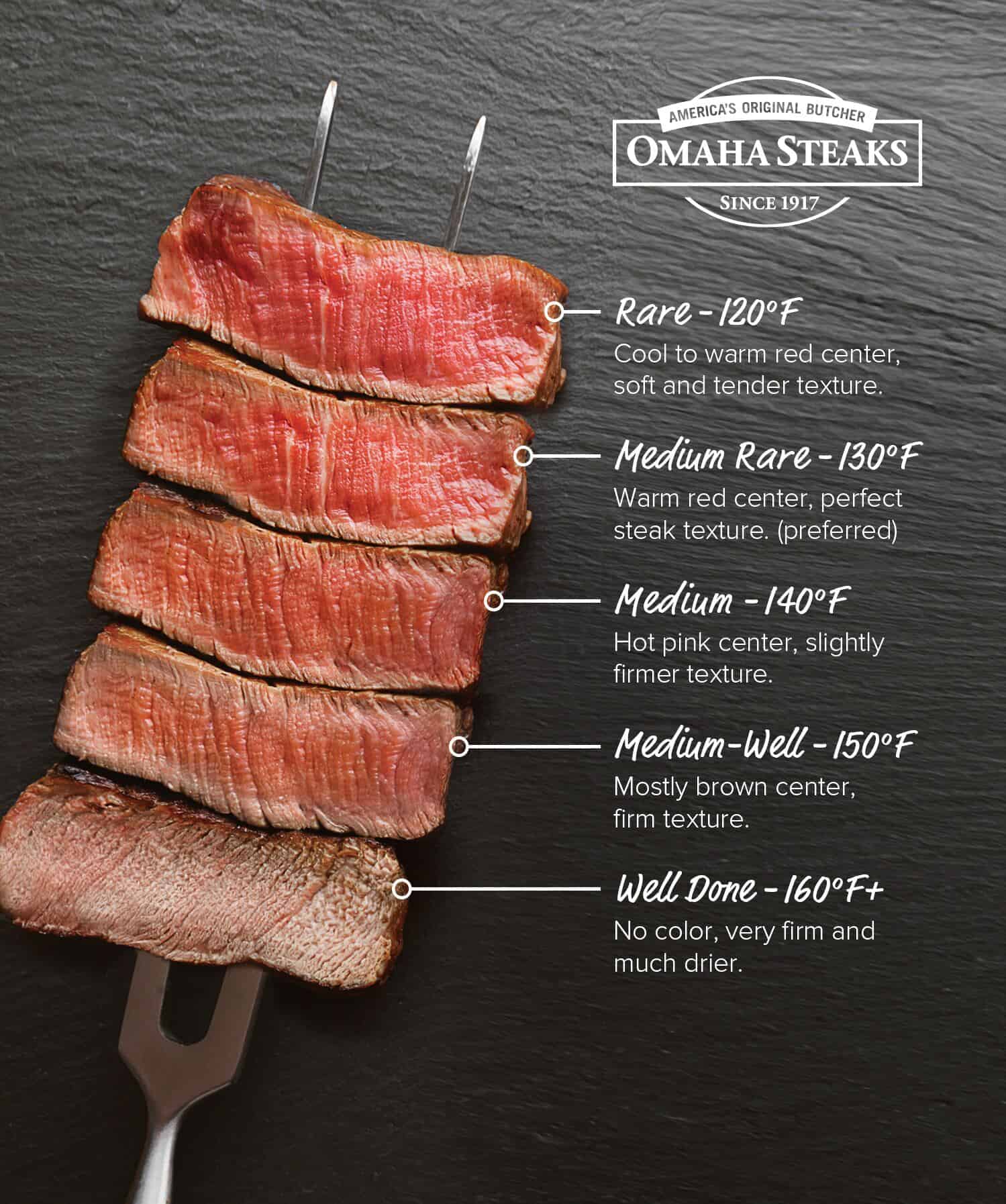

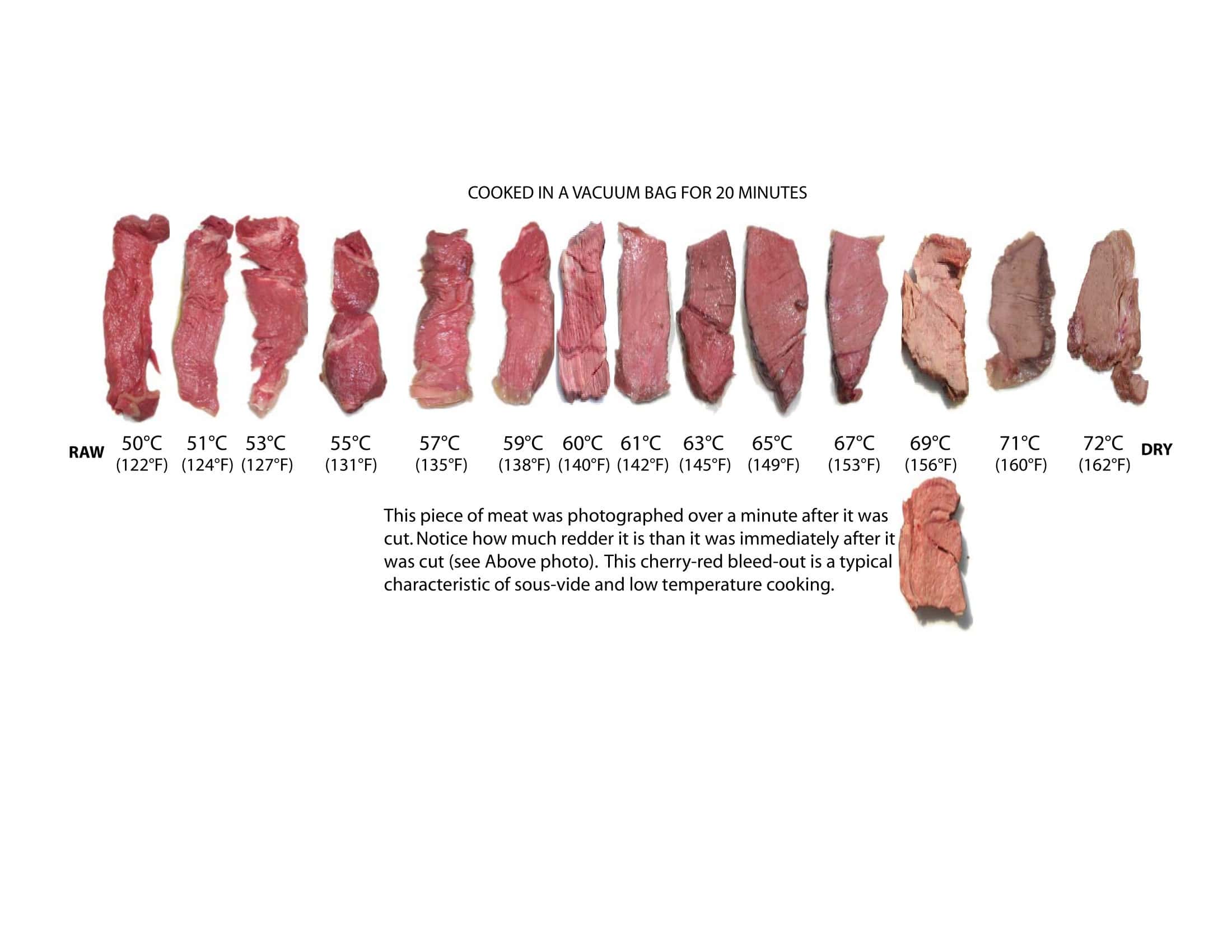

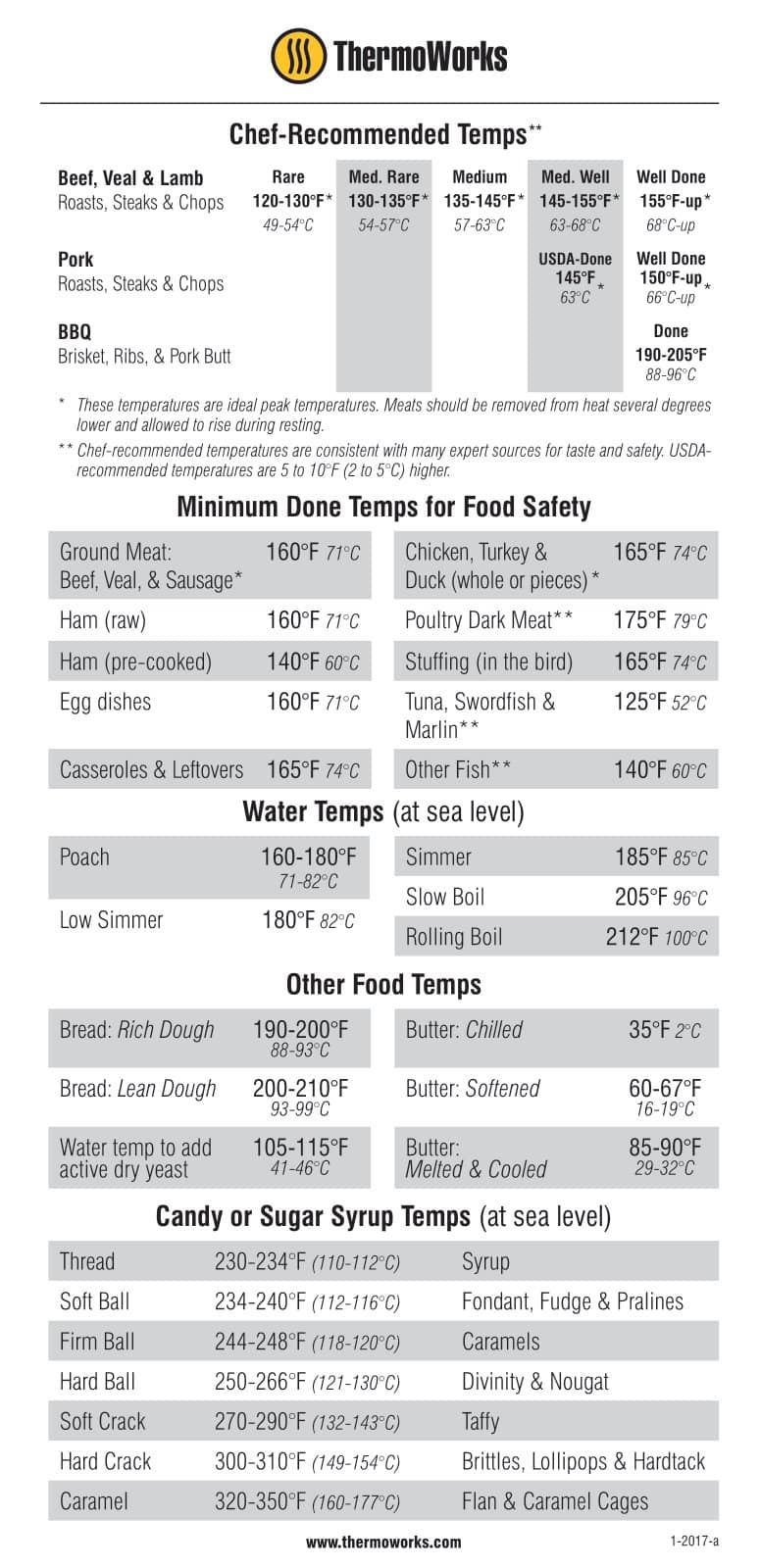




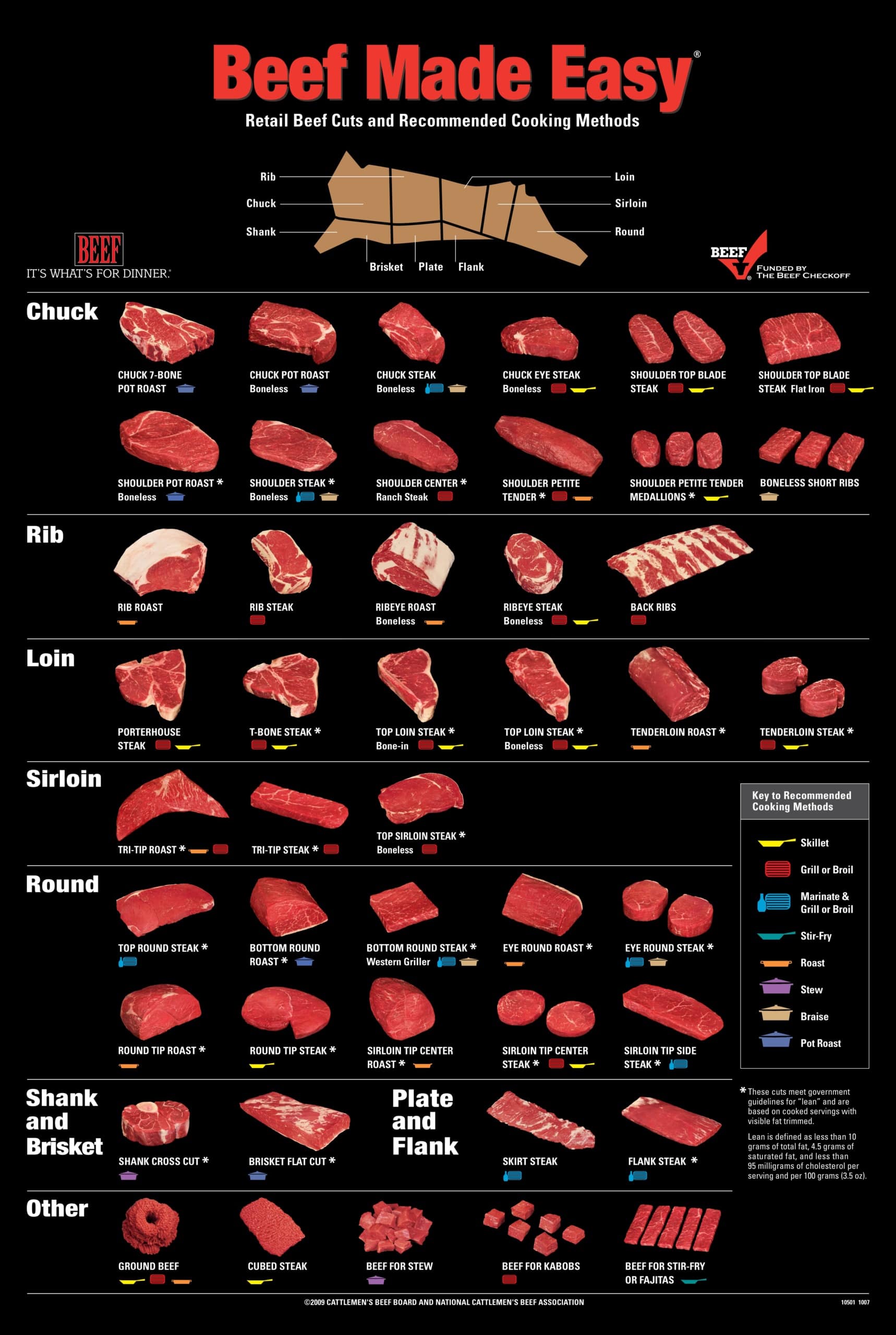









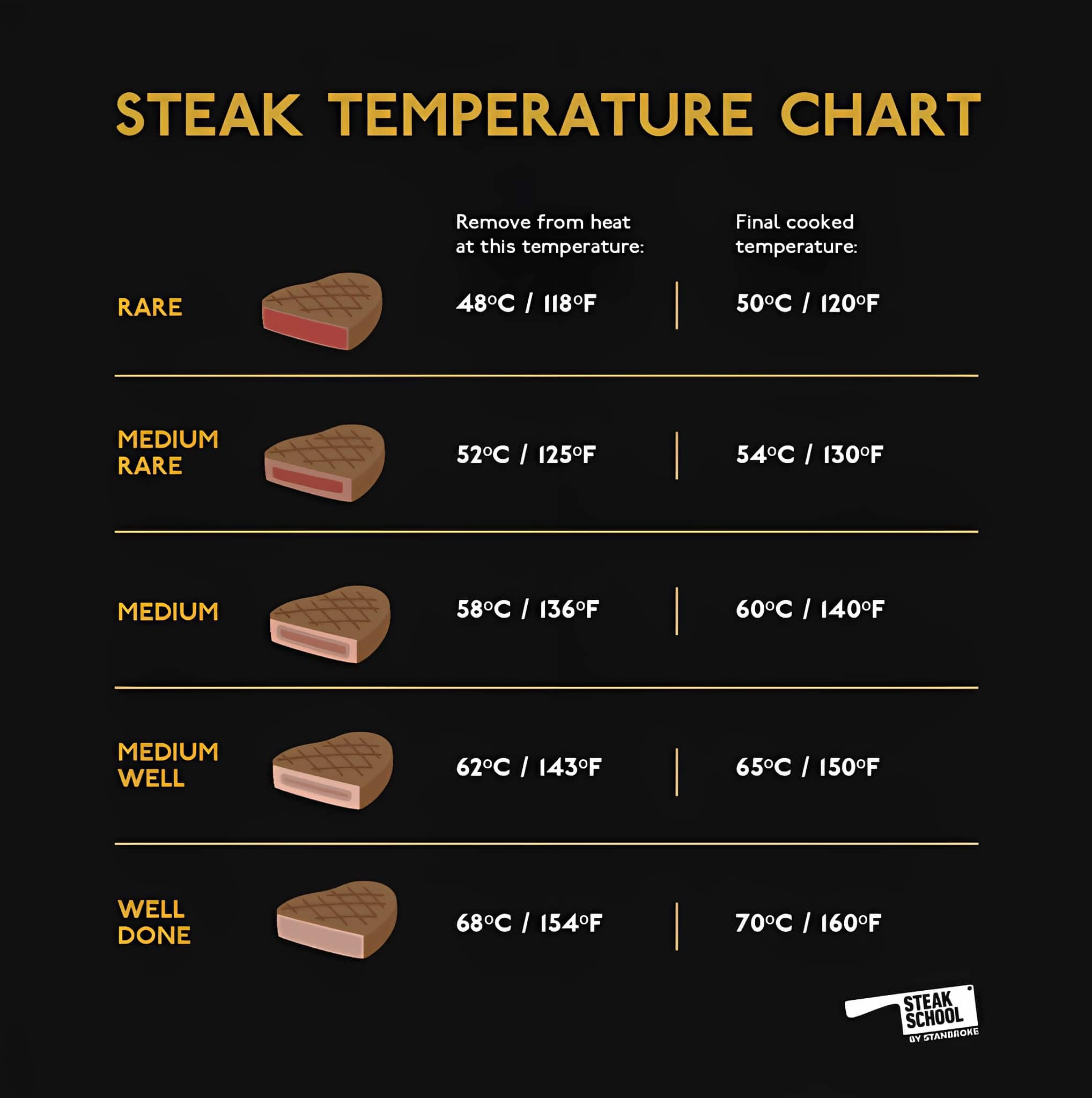


![Free Printable Morse Code Charts [Numbers, Alphabet] 1 Morse Code Chart](https://www.typecalendar.com/wp-content/uploads/2023/09/Morse-Code-Chart-150x150.jpg)

![43+ Free Printable 134A PT Charts [Download PDF] 3 134A PT Chart](https://www.typecalendar.com/wp-content/uploads/2023/09/134A-PT-Chart-150x150.jpg)
